Gray whale
Eschrichtius robustus
-
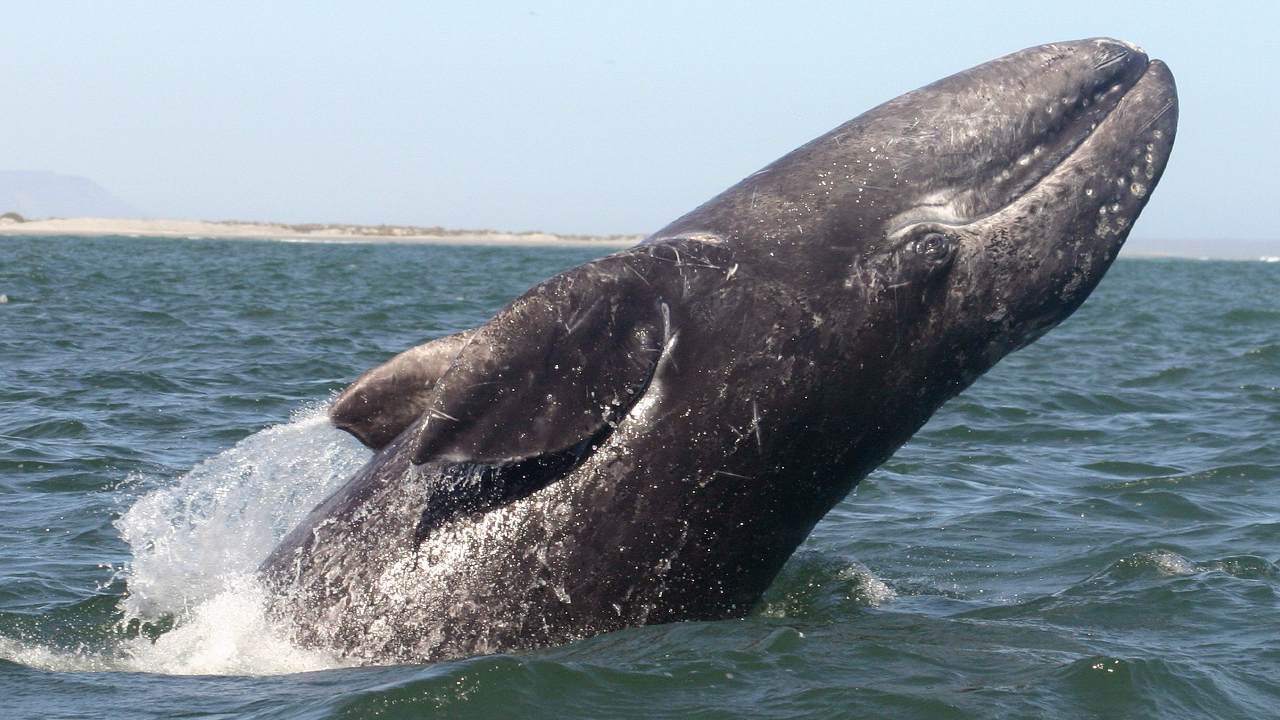 The gray whale was hunted until it became extinct in the North Atlantic in the 18th century. The species had previously been common off the coast of Europe and North America as well being found off Iceland’s coast. Their range is currently restricted to the coastal areas of the North Pacific, on both the east and the west coasts.
The gray whale was hunted until it became extinct in the North Atlantic in the 18th century. The species had previously been common off the coast of Europe and North America as well being found off Iceland’s coast. Their range is currently restricted to the coastal areas of the North Pacific, on both the east and the west coasts. -
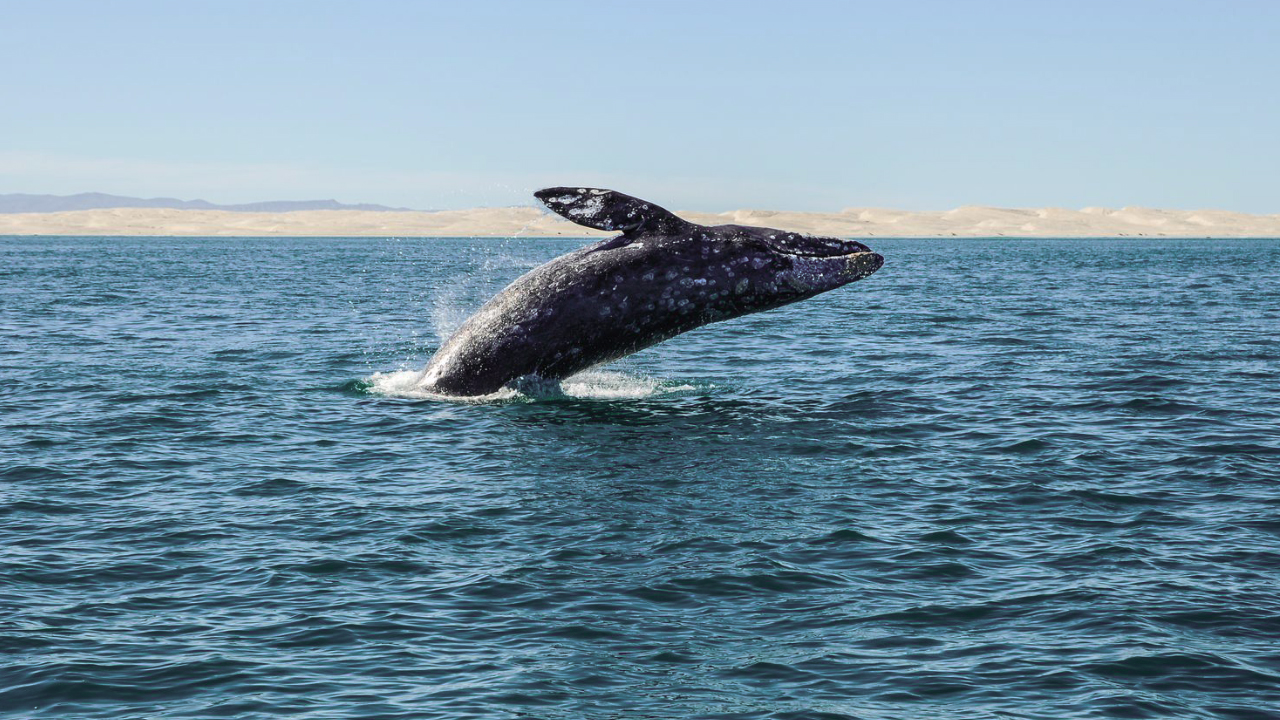 Gray whales are the most ancient species of baleen whale currently in existence. The species has not changed for the past 30 million years and looks, therefore, extremely primeval. Other baleen whale species have evolved considerable over the same period. Gray whales have the longest migration route of any mammal currently in existence. During the course of a single year, they may travel for a total of 20,000 km between their feeding grounds in the Northern Hemisphere and their breeding grounds off the Pacific coast of Mexico.
Gray whales are the most ancient species of baleen whale currently in existence. The species has not changed for the past 30 million years and looks, therefore, extremely primeval. Other baleen whale species have evolved considerable over the same period. Gray whales have the longest migration route of any mammal currently in existence. During the course of a single year, they may travel for a total of 20,000 km between their feeding grounds in the Northern Hemisphere and their breeding grounds off the Pacific coast of Mexico. -
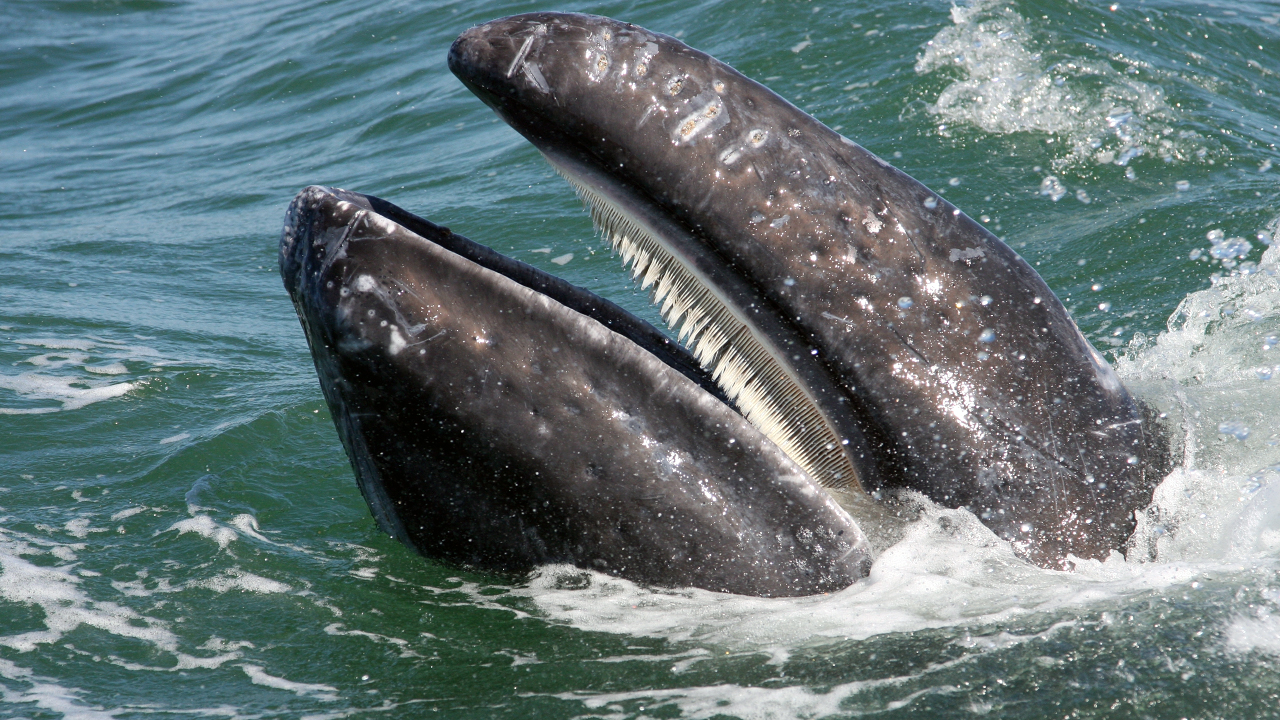 Whalers used to call them “devilfish” because of the fierce defence they put up when hunted. They have a layer of blubber up to 25 cm thick. There are hairy bristles on the gray whale’s snout and the front of the head. These are used as tactile sensors, like a cat’s whiskers.
Whalers used to call them “devilfish” because of the fierce defence they put up when hunted. They have a layer of blubber up to 25 cm thick. There are hairy bristles on the gray whale’s snout and the front of the head. These are used as tactile sensors, like a cat’s whiskers. -
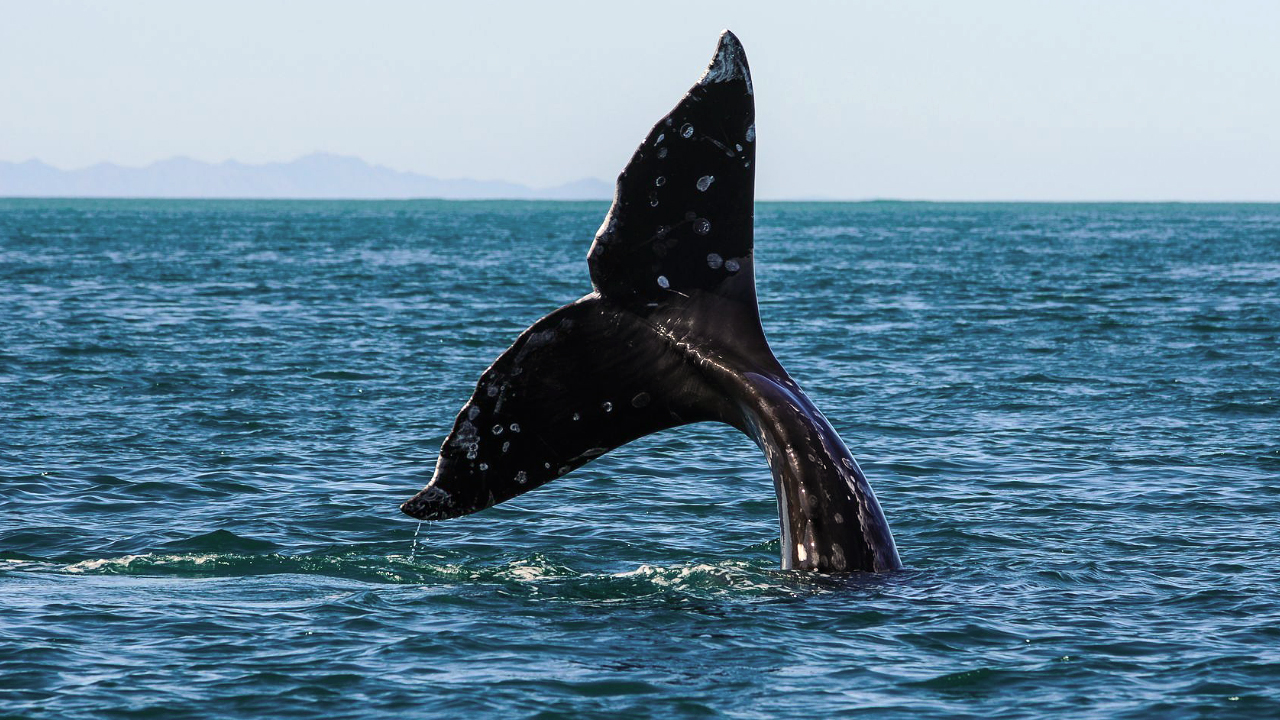 The gray whale’s skin is usually grey with some blotchy white spots and has many parasites, including hundreds of pounds of barnacles and whale lice. Gray whales have 2–4 throat grooves, about 1.4 m long each. These grooves allow the throat to expand during the huge intake of water during filter feeding.
The gray whale’s skin is usually grey with some blotchy white spots and has many parasites, including hundreds of pounds of barnacles and whale lice. Gray whales have 2–4 throat grooves, about 1.4 m long each. These grooves allow the throat to expand during the huge intake of water during filter feeding. -
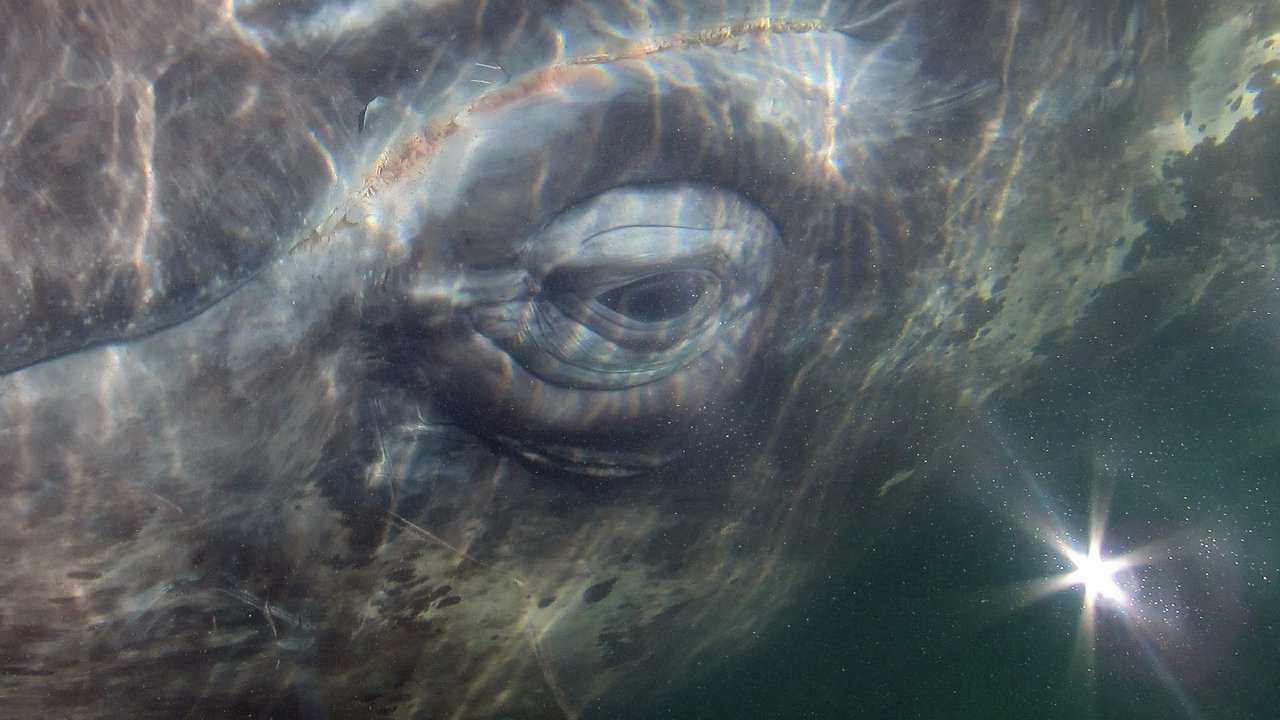 Gray whales are seasonal feeders and carnivores. They are bottom feeders. They sieve through the mud on the bottom of the ocean floor of the Arctic with their baleen plates. They filter out small crustaceans, long shrimp-like crustaceans, krill, copepod, plankton, and molluscs as well as squid and fish from the ocean sediment.
Gray whales are seasonal feeders and carnivores. They are bottom feeders. They sieve through the mud on the bottom of the ocean floor of the Arctic with their baleen plates. They filter out small crustaceans, long shrimp-like crustaceans, krill, copepod, plankton, and molluscs as well as squid and fish from the ocean sediment.
